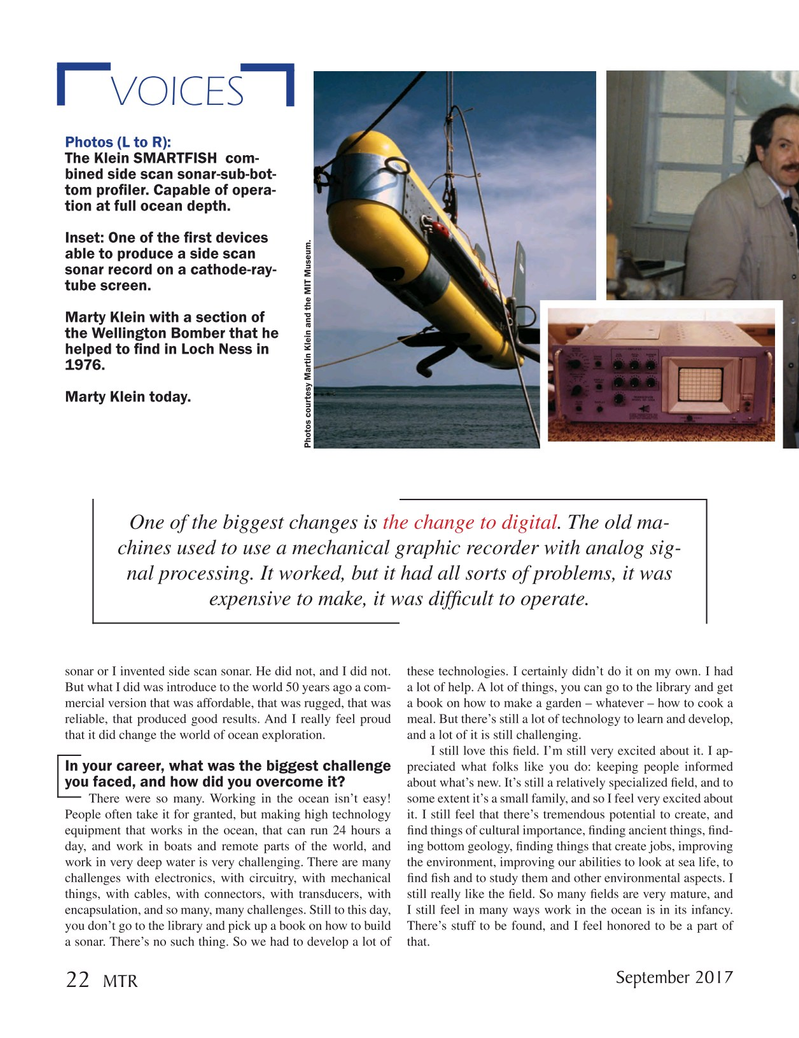
Page 22: of Marine Technology Magazine (September 2017)
Ocean Observation: Gliders, Buoys & Sub-Surface Networks
Read this page in Pdf, Flash or Html5 edition of September 2017 Marine Technology Magazine
VOICES
Photos (L to R):
The Klein SMARTFISH com- bined side scan sonar-sub-bot- tom pro? ler. Capable of opera- tion at full ocean depth.
Inset: One of the ? rst devices able to produce a side scan sonar record on a cathode-ray- tube screen.
Marty Klein with a section of the Wellington Bomber that he helped to ? nd in Loch Ness in 1976.
Marty Klein today.
Photos courtesy Martin Klein and the MIT Museum.
One of the biggest changes is the change to digital. The old ma- chines used to use a mechanical graphic recorder with analog sig- nal processing. It worked, but it had all sorts of problems, it was expensive to make, it was dif? cult to operate. sonar or I invented side scan sonar. He did not, and I did not. these technologies. I certainly didn’t do it on my own. I had
But what I did was introduce to the world 50 years ago a com- a lot of help. A lot of things, you can go to the library and get mercial version that was affordable, that was rugged, that was a book on how to make a garden – whatever – how to cook a reliable, that produced good results. And I really feel proud meal. But there’s still a lot of technology to learn and develop, that it did change the world of ocean exploration. and a lot of it is still challenging.
I still love this

 21
21

 23
23
